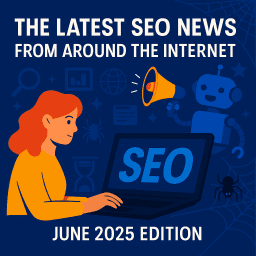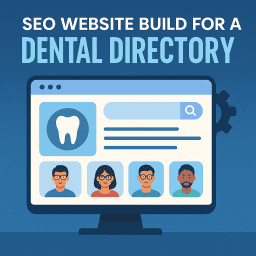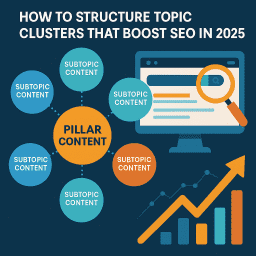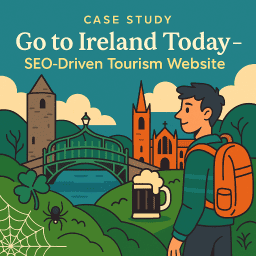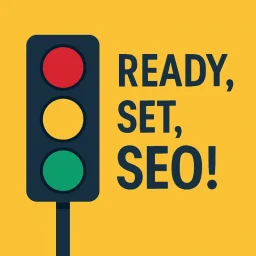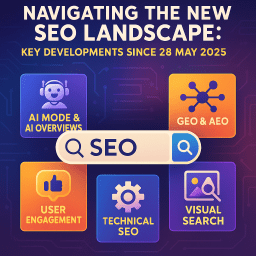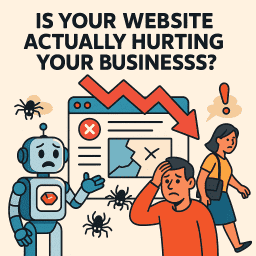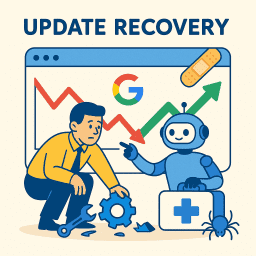What Really Drives E-E-A-T for SEO and GEO Success in 2025
How Trust, Not Checklists, Builds Visibility
👥 Putting People First: How Real Trust Drives SEO and GEO
Many talk about E-E-A-T – experience, expertise, authoritativeness and trustworthiness – as if it’s a checklist or some secret ranking formula. But here’s the truth: ticking boxes won’t get you far. What really matters is trust – and not just any trust, but the kind that users actually feel when they land on your site, read your content, and believe in what you’re saying.
Despite all the talk, E-E-A-T isn’t a ranking score or a dial you can turn up. Google doesn’t assign E-E-A-T points, and neither does ChatGPT or any AI system. Instead, it’s a set of principles – a mindset – for how to build content that people find reliable, useful and worth sharing.
🔍 It’s Not About Algorithms – It’s About People
Let’s clear up a common misconception: E-E-A-T is not an algorithmic metric. There’s no official ‘score’ to chase. It’s more like a philosophy for creating content that earns user trust over time. When people trust your website, good things follow: higher engagement, more links, more mentions, and better visibility – in both search engines and AI-driven platforms.
And trust isn’t built with gimmicks. Plastering “Reviewed by Dr Someone” on an article doesn’t prove anything if the expert isn’t credible – or worse, isn’t real. Nor does uploading a selfie next to your product when it can easily be faked. Smart users – and smart algorithms – can sniff that out.
The real goal of E-E-A-T is to serve the person reading your content. Are you giving them what they came for? Are you being honest, thorough, and helpful? That’s what drives SEO and GEO success.
🛠️ Real-World Ways to Build E-E-A-T
Here are a few strategies we use with our own clients to strengthen trust and boost performance:
📚 Use Sources That Actually Back Up Your Claims
Not all links are created equal. When you’re referencing a fact or making a bold claim, don’t just link to a dictionary or your own blog post. That doesn’t help the reader understand why your claim is valid.
Imagine you run a fitness blog and write, “Cold showers boost mental clarity and reduce stress.” Instead of linking to a definition of ‘cold shower,’ link to a peer-reviewed study or scientific article that explores how cold exposure impacts cortisol levels or brain activity. That gives your claim weight – and gives readers confidence that you’re not making it up.
- ✅ Check the author is a real expert.
- ✅ Ensure the site is focused on the topic or has a dedicated section.
- 🚫 Look for updated content and avoid sites overloaded with ads.
🧭 Structure Content So People Find What They Need Fast
No one wants to scroll endlessly to find a simple answer. Help people get to the point by adding:
- 📑 Clear headings
- 🔹 Bullet points
- 🧩 Tables of contents or jump links
- 📌 Summaries or FAQs at the top
Introduce yourself or your expertise early. A short note like “Based on my own visa journey in 2023…” can build trust instantly.
🧑⚕️ Use ‘Reviewed by’ and Author Bios Thoughtfully
In topics that affect health, money, or safety, credibility is everything. Add “reviewed by” and bios only when they’re honest and relevant.
- 👨🏫 Highlight authors with direct experience or credentials.
- 🔍 Ensure reviewers are actively working in the field.
- 🎯 Focus bios on professional background – not hobbies.
🖼️ Choose Images That Support, Not Distract
Use visuals that help explain or demonstrate – not just for decoration.
- 📷 Travel: show specific photo spots and angles
- 👩🍳 Cooking: include images of undercooked, perfect, and overcooked stages
- 💻 Coding: show working and broken code side-by-side with clear explanation
❓ Always Answer the “Why?” and “How?”
Don’t just say something is “good” – explain why. Add reasoning to every recommendation.
❌ Unhelpful: “This is the best spot for a photo.”
✅ Helpful: “This is the best spot because the early light creates natural backlighting that enhances facial features without harsh shadows.”
📈 The Bigger Picture: E-E-A-T Fuels Visibility
When users trust your content, they share it, bookmark it, and link to it. That’s what tells Google – and generative engines – that your site is worth surfacing.
E-E-A-T isn’t about formulas or tricks. It’s about helping people. Get that right, and your SEO and GEO visibility will often follow naturally.
🧠 Expert Opinions
“Trust isn’t built with badges or bios – it’s earned through clarity, credibility, and consistency. If your content feels honest and genuinely helpful, users will stick around – and so will your rankings.”
“E-E-A-T is about aligning with the user’s expectations. When your content answers their needs without fluff or fakery, that’s when you become the trusted source.”
“You can’t fake authority anymore. Build it by showing up, sharing what you know, and helping people better than anyone else.”
“Google’s quality raters aren’t looking for tricks – they’re looking for trust signals. If your site feels legitimate, useful, and honest, that’s what matters.”
🧾 Final Thoughts
E-E-A-T isn’t a checklist, a plugin, or something you can game with a few tags. It’s a mindset – one rooted in user respect, honest expertise, and genuine value. Whether you’re optimising for Google or AI tools like ChatGPT, the same principle holds: if your content is trustworthy, clear, and helpful, it will stand out.
As search continues to evolve into an ecosystem of AI-driven engines and user-intent refinement, content creators and businesses must adapt. But that doesn’t mean changing tactics every month. It means doubling down on what has always mattered – creating useful, evidence-based, user-focused content.
Don’t overthink E-E-A-T. Just make sure your content passes a simple test: would a real person, with a real question, trust what you’ve written enough to take action on it?
When your content serves real users, everything else – rankings, visibility, mentions – tends to follow.
Also read:
How to Build an Author Profile That Enhances E-E-A-T in 2025
E-E-A-T in 2025: How to Build Real Authority in Your Niche
AI Search Trust: How Reputation Graphs Decide
Frequently Asked Questions
What does E-E-A-T stand for?
E-E-A-T stands for Experience, Expertise, Authoritativeness, and Trustworthiness.
Is E-E-A-T a ranking factor in Google?
No, E-E-A-T isn’t a direct ranking factor. It’s a guideline for building trust and content quality.
How can I show expertise on my website?
Include bios, credentials, citations, and content that shows firsthand experience or recognised qualifications.
Does adding “Reviewed by” help with SEO?
Only if it’s genuine and the reviewer is a credible expert. Fake reviews can damage trust.
Are outbound links important for E-E-A-T?
Yes, when they point to relevant, trustworthy sources that support your claims.
What makes a citation trustworthy?
A credible citation comes from an expert author, on a site that’s focused, up-to-date, and free from spammy links.
Does AI content hurt E-E-A-T?
Not necessarily. If AI-generated content is fact-checked and reviewed by experts, it can still meet E-E-A-T standards.
Should I use author bios on every post?
Use bios where trust and expertise matter most – especially for health, finance, or legal content.
Can I build E-E-A-T without being a certified expert?
Yes – firsthand experience, transparency, and consistent quality can still build strong trust with users.
Is E-E-A-T important for AI tools like ChatGPT or Perplexity?
Yes. These systems prioritise trustworthy content when summarising or citing websites in responses.





